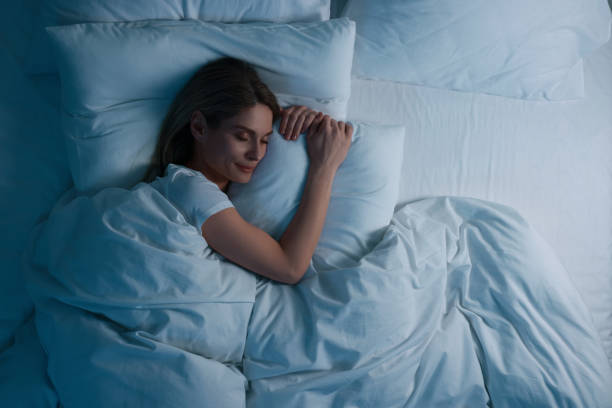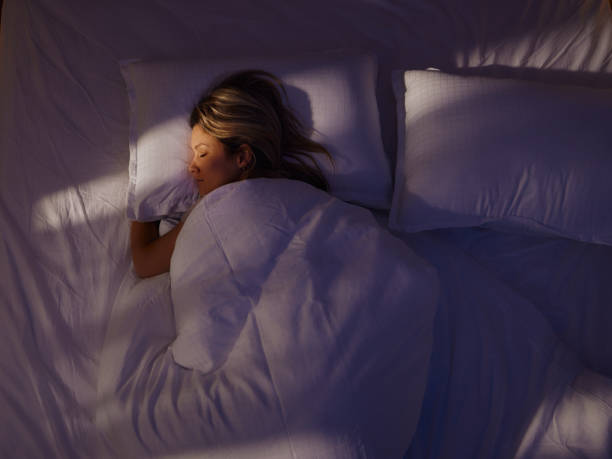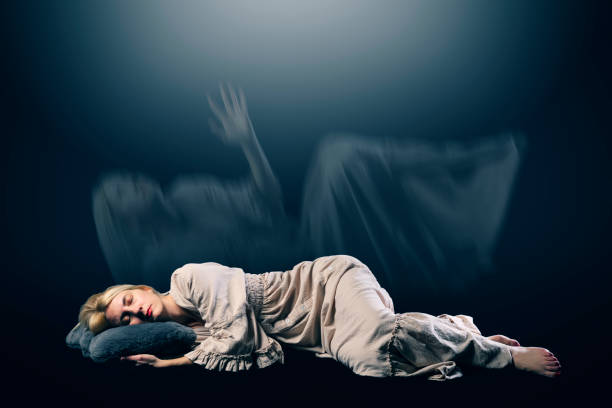Hallucinations
Hallucinations are falsely perceived objects & sensory images that arise in the absence of a real external stimulus. But accompanied by confidence in its existence. Elementary hallucinations are represented by ringing, humming, flashes of light, glowing figures, smells. Simple hallucinations are complete images: static animals, household items. Complex hallucinations are dynamic phenomena, for example, voices commenting on what is happening. Diagnostics are performed using observation, conversation, analysis of the general clinical picture. Antipsychotic drugs are prescribed during therapy.

General characteristics
A distinction is made between true and false hallucinations. True hallucinatory images have the qualities of objectivity, integrity, structure, and constancy. They are assimilated with the real situation, i.e. they interact with existing objects, for example, an axe is lying on the table. Pseudo hallucinations remain present in a conditional, imaginary space and repeatedly do not have a clear structure. Common variants are voices in the patient’s head or visual images hanging in the air. The origin of pseudo-hallucinations is interpreted by the patient as artificially caused by another person.
According to their content hallucinations can be elementary, unassuming & composite. Elementary hallucinations have incomplete objectivity, are unimodal, and are represented by separate non-speech sounds and simple images, like causeless flashes. Simple hallucinatory phenomena are objective, static, sometimes move, but do not change form. They are unimodal – they involve one analyzer. Example: the smell of poison combined with voices behind the wall, deciding to poison the patient.
Hallucinations are varied – single and multiple images, chaotically arising or connected by a common plot, neutral in relation to the patient or frightening, imperative, commenting, amusing. According to the key analyzer involved, they are divided into visual , olfactory, auditory , tactile, gustatory, visceral, motor, complex. Regardless of the cause and modality, the general characteristic is that the images are always perceived by the patient as really existing.
Causes of hallucinations
Hallucinations can completely change behavior, emotions, feelings and thoughts. The brighter the images, the more they control a person, “obscuring” reality. Their content and frequency vary depending on the etiological factor. The causes of hallucinations can be divided into four large groups: states of physiological or psychological stress, mental illnesses, neurological pathologies and poisoning with psychoactive substances.
Extreme conditions
Hallucinatory sensations appear in extreme situations for the body, which are often accompanied by the risk of death, associated with a pronounced deficiency or excess of chemical substances, information, physical effects. Such phenomena cause a state of acute mental or physiological stress, and hallucinations are formed on the basis of changes in biochemical processes in the brain. Their possible causes:
- Overheating. Unreal images, sounds, voices occur when the body temperature rises to 41-42° C. This state remains experiential with illness, severe heat stroke . Psychomotor agitation, delirium, confusion are characteristic.
- Hypothermia. Extremely low temperatures can also provoke a delirious-hallucinatory state. Symptoms develop already at a mild stage of hypothermia , when the body temperature drops below 35° C. A person feels chills, the functions of internal organs are suppressed, coordination of movements is impaired, perception is distorted.
- Lack of food. Lack of nutrients creates a discrepancy of energy which is necessary for the effective of the brain and other organs. Hallucinosis appears on the 7-9th day of fasting, when ketone bodies become the main energy source. The person looks detached, indifferent, shows no interest in loved ones, current events.
- Lack of air. Oxygen is necessary for normal brain function. When air supply is cut off, brain tissue uses oxygen reserves for 4-5 minutes, after which hypoxic changes gradually increase, hallucinatory images are formed. Causes of oxygen deficiency are deliberate suffocation, being in an unventilated room, ischemic brain damage.
- Severe fatigue. Long term physical & mental overload can cause hallucinatory experiences. Distortion of perception occurs as a result of exhaustion of the nervous system, or more precisely, a violation of its selective function, the ability to distinguish the real from the imaginary.
- Sleep deprivation. Lack of sleep can be the result of insomnia , serious illnesses, forced wakefulness due to overload at work. Sometimes the state of sleep deprivation is formed purposefully in order to achieve an altered state of consciousness. Regardless of the cause, a person experiences vivid hallucinations, heightened perception of the senses, a feeling of unreality of what is happening.
Sensory insufficiency. The nervous system functions normally under constant exposure to various stimuli. If the volume of incoming sensory information is significantly reduced or its flow ceases completely, the brain compensates for this by creating its own stimuli – images of various modalities. Cosmonauts experience such conditions.
- Social isolation. Reduced or no opportunity to interact with other people provokes loss of personal identity. A person stops understanding who and what he is, feels the loss of himself as a representative of society. It is often represented by the voice of a “friend,” the image of a relative. The causes of social deprivation are confinement in a solitary confinement cell, serious illness.
Mental disorders
In psychiatric practice, hallucinations often appear within the framework of hallucinatory-delusional syndrome. They are characteristic of psychoses – disorders accompanied by emotional and behavioral inadequacy, lack of critical attitude towards oneself. As a rule, patients develop pseudo-hallucinations – visual, auditory, olfactory, gustatory, kinesthetic images that are formed without reference to real space, often accompanied by a feeling of being imposed, suggested by someone else. Causes of hallucinatory-delusional phenomena:
- Schizophrenia . In schizophrenia, the development of hallucinations is considered a first-rank symptom. Patients hear the sound of their own thoughts, contradictory, mutually exclusive and commenting voices. Somatic pseudo-perceptions (movement, deformation of organs) are noted. Patients are sure that their ideas, feelings and impulses are being influenced, that their thoughts can be read and recognized by others.
- Bipolar disorder . Symptoms of psychosis are observed in severe cases of bipolar affective disorder. A common psychotic manifestation is auditory and visual hallucinatory ideas. They most often develop in the manic phase along with delusional ideas of grandeur and omnipotence. The hallucination may be congruent or incongruent with the patient’s mood, supporting manic tendencies or not associated with them.
- Symptomatic psychoses. Causes of exogenous psychotic states are severe somatic diseases, infections, poisoning. They follow with passing overshadowing of consciousness, from nightfall to oneiroid. Acute psychosis usually lasts from several hours to 2-3 days, delirium with hallucinations often develops at night, the emerging images frighten patients.
- Organic delusional disorder . Schizophrenia-like disorder may involve hallucinatory-delusional attacks, accompanied by unmotivated actions, loss of control over behavior, and manifestations of aggression. Deliriums stand visual, have religious, magical content, and call for action. Causes of organic delusional disorder are epilepsy , focal brain damage, and psychoactive substance poisoning.
- Organic hallucinosis . The distinctive feature of organic hallucinosis is continuous hallucination caused by the influence of an organic factor. The images are stable, appear with clear consciousness, during periods of wakefulness. The most common is alcoholic hallucinosis , in which patients hear pointing or threatening voices.

Neurological diseases
Another cause of hallucinatory images is organic damage to the parts of the brain responsible for processing perceived information. Pathological irritation of the cortical parts of the analyzer occurs, patients begin to see flashes, simple luminous objects, hear music, smell, feel the taste in the mouth in the absence of real stimuli. Another neurological cause of hallucinations is the loss of the analyzer or its functions.
Neurodegenerative processes. Degeneration of nervous tissue leads to the development of dementia – a chronic progressive disease characterized by a violation of higher cortical functions, including memory, speech, and intelligence. Hallucinations are not a mandatory symptom. They are most often diagnosed with dementia with Lewy bodies , less often – with Alzheimer’s disease, Huntington’s chorea .
- Local brain damage. Hallucinatory visions and sensations are provoked by focal damage to the temporal, occipital or parietal lobes of the brain, hypertension of the midbrain or brainstem. Speedy bases are swellings, lashes , vascular distortions, craniocerebral disturbance , important variants of epilepsy. True elementary and simple hallucinations are typical: flashes, noises, tactile sensations.
- Neuroinfections . In neuroinfections, the pathogen penetrates into the tissues of nerve cells, causing both general somatic symptoms and damage to the central nervous system. Convulsions, impaired consciousness, a state of overexcitation, delusional-hallucinatory syndrome can occur in the acute course of purulent encephalitis and meningitis .
- Loss of analyzer function. When the analyzer loses the ability to receive external information, a state of forced sensory deprivation is formed. Hallucinatory sensation develops according to compensatory mechanisms, recreating images of a certain modality. A well-known example is Charles Bonnet syndrome – seeing images by patients with acquired severe visual impairments.
- Narcolepsy . A person with narcolepsy may get very sleepy and limp all over, but they do not lose consciousness. When people are falling asleep, hallucinations called hypnagogic hallucinations prevent them from sleeping the way they should. Afterwards, people who wake up are troubled by hypnopompic hallucinations, preventing them from accurately assessing their surroundings.
Use of psychoactive substances
Hallucinations can be provoked by taking medications, whiskey and some medications. Following the use of a psychoactive substance, acute intoxication develops, accompanied by a disorder of consciousness, cognitive functions, perception, and emotions. The mental disorder is characterized by vivid hallucinatory images, false recognition, and delusional attitudes. Such conditions are provoked by the use of a number of substances:
- Hallucinogens. When using psychotomimetics such as LSD , mescaline, ecstasy, mental and behavioral deviations develop. In the acute period of intoxication, uncontrollable laughter, crying, euphoria, depersonalization , derealization are observed . Hallucinatory experience is usually vivid, dynamic, polymodal. The tendency to hallucinosis may persist, manifesting itself in the future when taking alcohol, sleeping pills.
- Cannabinoids. Crushed flowers and leaves of hemp, preparations from them lead to narcotic intoxication. Hallucinogenic, stimulating and sedative effects are noted. Hallucinatory visions are the result of acute intoxication, one-time use of high doses of the substance.
- Amphetamines . These synthetic substances cause mental excitement, a feeling of well-being, emotional closeness to other people. The introduction of large doses provokes the development of panic attacks , hallucinations, paranoia .
- Toxicomania . The group of toxic substances includes paint thinners, glues, varnishes. Intoxication is accompanied by a loss of the ability to critically evaluate what is happening. Hallucinatory sounds and visions, clouding of consciousness, vomiting may occur. When substances are removed from the body, headaches intensify, weakness appears.
Diagnostics
Pathopsychological assessment of the patient’s condition is based on the clinical experience of a psychiatrist . The assumption of the presence of hallucinations is possible when observing the patient’s behavior, analyzing the general picture of the disease (anamnestic, catamnestic information). The standard diagnostic process includes three procedures:
- Clinical interview. The peculiarity of hallucinations is that they are perceived by patients as part of reality, a critical attitude is possible only in rare cases. Therefore, direct questions about the symptom are ineffective. Hallucinatory-delusional syndrome is revealed in the process of communication with patients, when they begin to talk about unlikely or implausible events – “wave impact”, “mind reading”, “suggestion by glance”.
- Thought. The behavior of patient and emotionalstate reflect the content and nature of hallucinations. He can peer into the space in front of him, into an empty wall, experiencing fear, surprise, joy. With auditory hallucinations, patients often listen to voices and sounds, can engage in dialogue, swear, laugh, joke. Tactile sensations make them scratch, rub their skin, ask the doctor to examine them, remove “insects”.

Treatment
To eliminate hallucinations caused by taking psychoactive drugs, it is often enough to stop taking drugs. In case of deprivation of vital substances and conditions, return them to their previous level: normalize body temperature, restore adequate nutrition, sleep and rest, resume social contacts. Hallucinatory symptoms in mental and neurological diseases are relieved with the help of neuroleptics. They reduce mental and motor agitation, prevent the formation of productive psychotic symptoms.

[…] is a cause for concern if it arose as a result of internal confrontation – fear, uncertainty, Hallucinations lack of communication experience. Then the general orientation of the personality towards […]
[…] syndrome, fever, rashes of small red spots (exanthema), hepatosplenomegaly, and in severe cases, hallucinations and lethargy. Typhoid fever stays spotted as soon as the pathogen is distinguished in the blood, […]